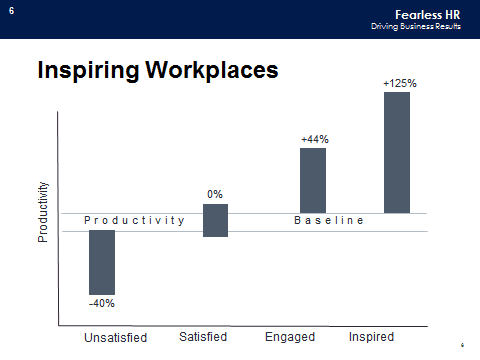

By David C Forman, Author of Fearless Talent Choices and Fearless HR
WHY SHOULD YOU CARE?
Employees need to see clearly how they contribute to their company’s goals, as well as how it helps society. In order to be fully engaged, it is essential to find this meaning in their daily work.
What do Dan Pink, Angela Duckworth, Dave Ulrich, Simon Sinek, Chip Conley, Rosabeth Moss Kanter, Lauri Bassi, Neel Doshi, Lindsay McGregor, Paul Zak, Dov Seidman, Aaron Hurst, Marcus Buckingham and Joel Kurtzman have in common?
The answer may be surprising due to the breadth, depth and sophistication of this coalition. Perhaps they are all left-handed, love watching “Casablanca,” prefer Pad Thai to Sushi, or are avid fans of Louise Penny novels. But the one commonality that I know (in addition to all of them writing excellent books) is that they believe in the primacy of purpose in motivating people and transforming workplaces. And in this view, they are not alone. Writers, philosophers, balladeers, as well as other social scientists, have recognized that we as human beings want to belong to something bigger than ourselves. We want to make contributions that matter and last. We want to be proud of what we do, beyond bringing home a paycheck.
When so many esteemed thought leaders are saying the same thing, it deserves our attention. Whether it is Dan Pink suggesting that we all want to be purpose maximizers or Chip Conley urging workplaces to provide not just a job or a career, but a calling; the message resonates. It turns out that new research suggests that the payoff for purpose may be much greater than we think; but first let’s examine this important but somewhat ambiguous concept of purpose. There are two broad types of purpose that can serve as driving motivators.
Outward-looking Organizational Purpose: The organization exists for a reason and its actions impact markets, customers, shareholders, and the general community within which it operates.
1. Business Strength. A successful organization means more than happy shareholders. People like to be associated with strong and vibrant organizations that fulfill their mission, add value to clients, customers, and citizens, and that provide a stable platform for employees and external audiences alike. Highly respected organizations have a cachet that inspires confidence and strengthens ties. People like to be associated with winners, although this status can change quickly. Think: Google, the New England Patriots, or the Mayo Clinic.
2. Meaningful Impact of Products/Services. The missions of some organizations are immediately compelling. The buildings on the Genentech campus have the pictures of people whose lives have been saved by the medical cures their scientists have developed. The mission of NASA is to explore space for the benefit of humankind. It is easy to be proud of these contributions. Not every organization has such a direct link, but there are ways to recalibrate what the business does to improve people’s lives, and to shine a brighter light on purpose. In “Peak,” Chip Conley describes how the people working in his boutique hotels, many of whom cleaned rooms or delivered the bill underneath the door at night, found their purpose. Their shared, motivating purpose, which everyone owned, was to provide a warm, inviting home away from home for all their guests. This purpose was who they are at work.
3. Community Contributions. Sometimes the biggest impact is not what the company actually does, but the effect it has on the community. Panera Bread gives its excess product each day to local food banks; and it has Panera Cares stores in which people can pay whatever they can afford for menu items. Many companies have chosen to build parks, homes, establish mentoring programs and assist in natural disasters. These programs improve lives, and they also bring employees and the company closer together.
4. Societal Impact. Beyond the local community, there are organizational activities that can matter to many who struggle to deal with the larger forces buffeting our lives. The list is extensive: drug epidemics, civil rights, at risk children, gun violence, poverty, PTSD, homelessness, political oppression, and other seemingly intractable problems. But every helping hand lessens a burden; and this can be done in the private sector as well as the public. One example is the strong commitment to hire veterans and ease their transition back to civilian life. The Home Depot and the Boeing Company, among others, have made significant commitments to this program and these actions resonate for all employees and external audiences alike.
5. Planet Sustainability. As Richard Branson has said “There is no planet B, so we better take care of the one we have.” Organizations are huge occupiers of space, users of resources and energy, and emitters of products and byproducts. Carbon footprints, global warming, renewable energy, toxic spills, health threats, and even the survival of endangered species must be part of everyone’s agenda. See the writings of Tom Friedman for an excellent discussion of what happens in a world that is “hot, flat and crowded.” As huge as these problems seem, even small actions can make a significant
difference for future generations.
6. Principled Performance. Dov Seidman believes that companies will increasingly compete not on what they do, but how they do it. People take pride in doing business with companies that live their values, mean what they say, and have integrity. This is true in normal times, but, even more so, in times of crises when it is easy to abandon “convenient lip service” values that cost too much or are too difficult to realize. While many organizations adhere to their principles, two that are noteworthy are P&G and the Branson companies. Their principles are who they are.
Inward-facing Organizational Purpose: The organization is a social entity, and it impacts the people within it by presenting different opportunities, barriers, and experiences.
1. Embracing Culture. Why do 50 million people a month visit Glassdoor? There is now a wealth of information about organizations that used to be under wraps. This transparency enables people to make more informed decisions about their allegiances. Employees want to work in an environment that supports diversity, inclusion, openness, respect and equality. It must be a flexible organization that respects personal and professional obligations and promotes wellbeing. It needs to provide options so that people can make the best choices for themselves. Strict hierarchies restrict participation, limit opportunities and restrain interactions. A trusting environment opens up, rather than closes down, chances to contribute. Strong examples: Southwest Airlines, W.L. Gore, DaVita, SAS and WD-40.
2. Talent Incubator. While no company today can promise job security, some are offering career security. In “The Alliance,” Hoffman, Casnocha and Yeh talk about a new reciprocal alliance in which employees make the company more valuable, if the company makes them more valuable. At the end of the day, the greatest security employees have is to keep learning and growing. It is interesting to note that the top two factors that young professionals look for in a company are flexibility and developmental opportunities; they understand that skills are the new currency. A reciprocal relationship, in which both employees and employers receive value, strengthens ties and commitments. Help me grow and flourish and I will help the company do the same.
4. Interesting Work and Line of Sight Linkage. This dimension actually has three components: enjoying what you do, seeing the impact, and being recognized for it. One key step is to encourage managers to capitalize on employee’s strengths and aspirations as jobs are crafted and tailored. But intrinsic job satisfaction alone is not enough. People want to have a job that contributes, both externally and internally. If employees don’t see the link, or line of sight, from their job to what is important to the organization, they eventually will feel adrift and disconnected.
5. Collegial Ties. Research conducted in WWII asked soldiers why they did, what they did, and risked their lives. The number one reason was that they did not want to let their fellow soldiers down. The power of colleagues is immense, in terms of support, knowledge sharing, new experiences, and different perspectives. These ties are even greater today as work has become a team sport. Buckingham and Goodall (2019) state that over 80% of all work done in mid to large organizations is done in teams. The teams that are most successful are agile, multidisciplinary, and self-governing. Organizations that set up opportunities for different people to interact and contribute see the benefits in innovation, collaboration, and stronger engagement. Excellent examples: Google, Cisco, Haier.
An Example of an Integrated Purpose Statement
These external and internal dimensions of purpose interact and influence each other in many ways. Perhaps nowhere is this more apparent than in Apple’s purpose statement.
“Our products connect people everywhere, and they provide the tools for our customers to do great things to improve their lives and the world at large. Our company is open to all, and we celebrate the diversity of our team here in the United States and around the world ― regardless of what they look like, where they come from, how they worship or who they love.”
Want to work there?
Here is another; this time it is a small but rapidly growing industry leader. Appcast is the global leader in programmatic recruiting technology, helping organizations reach more qualified applicants faster. The market demand for these outcomes, in this economy, is huge. With over 300 employees in four countries (not counting the more than 25 office dogs), Appcast has created a culture based on values that are lived and reinforced every day. They are:
- Work Hard
- Team and Client Above Self
- Speak Up
- Learn Every Day
- Be Kind
- Do Good
Sound appealing?
The Purpose Payoff
The thought leaders referenced at the beginning of this article have championed the importance of purpose as a motivator of people. Similarly, as organizations are being held accountable for multiple bottom lines—not just financial outcomes—different dimensions of purpose are important for them as well.
New research by Mankins and Garton (2017) indicates just how right this emphasis on purpose is. They introduce a four-part scale for employees from unsatisfied to satisfied to engaged to inspired, and then link these categories to productivity and outcomes. Their findings:
- An employee who is satisfied is 40% more productive than an unsatisfied one.
- An engaged employee is 44% more productive than a satisfied worker.
- An inspired employee is 125% more productive than a satisfied one

The authors believe that most companies aim too low and settle for a satisfied or engaged employee. The big payoff is clearly taking that next step to being an inspired employee; and when this happens, the change in productivity is not simply arithmetic, it is multiplicative. So how do we get there?
Mankins and Garton suggest a pathway. They say that employees become engaged in their work in one of three ways. 1) They enjoy the content and nature of the work itself. 2) They are connected to the people they work with. 3) They believe in the company’s purpose. They go on to say that engaged employees are attached to one of these ways, while inspired employees are attached to all three. It turns out that emphasizing all the dimensions of purpose and multiple bottom lines is not just the right thing to do; it is the right business thing to do.
Final Thoughts
There are two final points to make as you consider how to apply these dimensions of purpose to your organization.
First, there can be a tendency to get preachy about purpose. People see right through empty rhetoric, no matter how humanistic or noble. Purpose must be genuine and authentic, and consciously integrated into the organization’s daily actions. A recent study by Gartner on cultural change describes the say-behave-operate spectrum: 83% of leaders say the right thing, 29% adjust their behavior, and 19% operate their organizations differently. The organization must operate on genuine purpose for sustainable advantages to be achieved. The key is to integrate purpose into the systems and processes of the organization so that it becomes recognizable every day.
Second, the real sweet spot is when organizational and personal purpose interact. We all have personal purposes and many change over time. And some purposes resonate with certain people and not others. The reality is that most organizations need to adopt multiple dimensions of purpose so that the right intersections occur for employees. But choices must be made because not everything is possible. Organizations, therefore, need to reconcile the fact that, based on their choices, some people will go elsewhere to seek fulfillment of other purposes. Being as explicit as possible about this fit is both goo for the organization and individual.
“Why you work affects how well you work.” – Neel Doshi and Lindsey McGregor, 2015
Meet the author at the upcoming Talent@Work Forum
Written by: Dave Forman
Culture Employee Engagement Talent Talent Management
Previous post

- 1564
labelArticles today2022.02.25.
Do you know where your work-from-home employees are?
By Lisbeth Claus, Professor Emerita of Management & Global HR at Willamette University and Visiting Professor Hochschule Pforzheim WHY SHOULD YOU CARE?The new normal of remote working provides great advantages, [...]
Similar posts

labelArticles today2024.07.24.
AI-Powered HR: Strategic Benefits and Practical Applications

labelArticles today2024.06.24.









Post comments (0)